Every Long Wade Starts With A Single Step
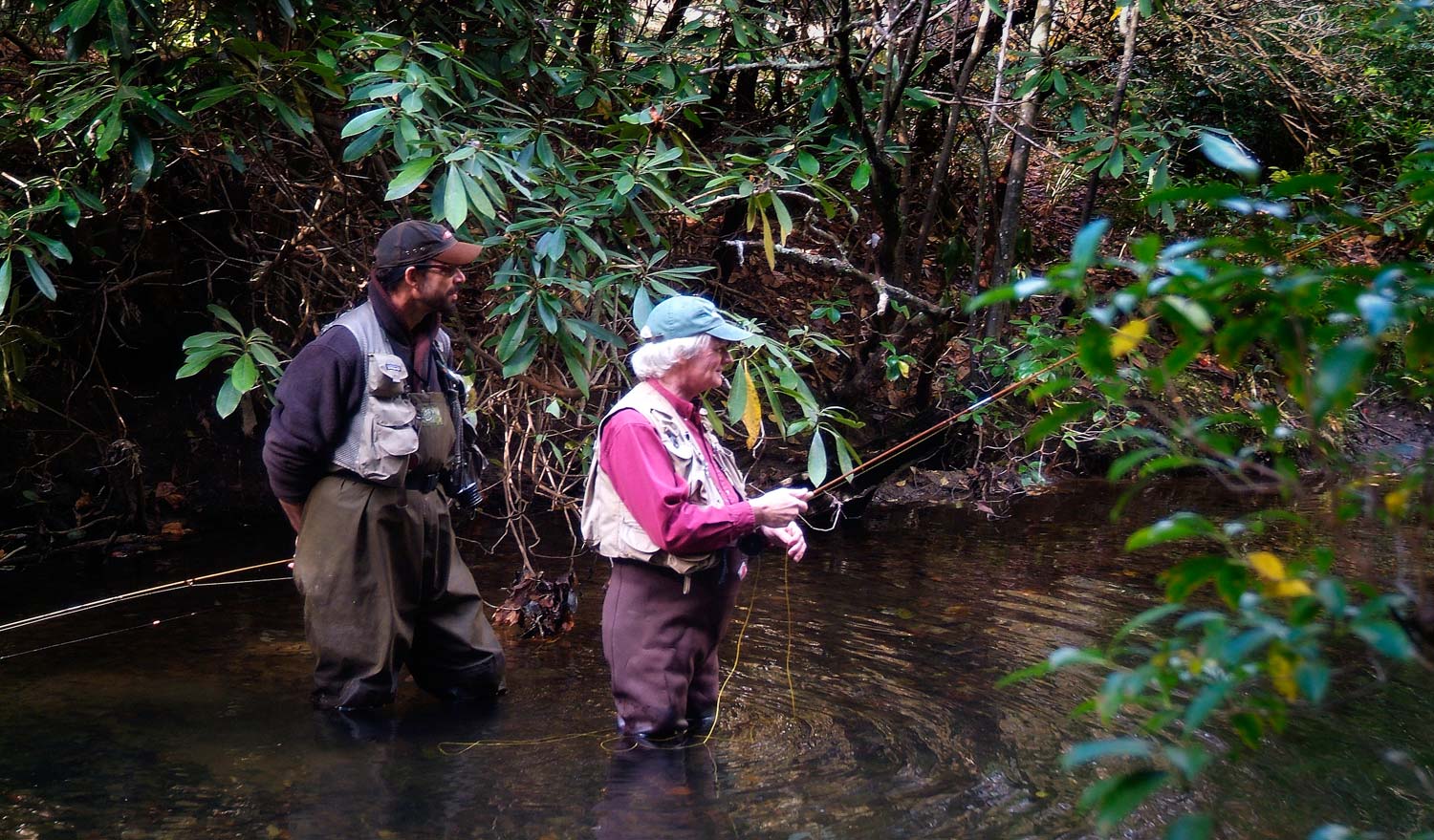
By Louis Cahill
After a year of recovery I tentatively made my first step into a trout stream.
I can not tell you how good it feels to be back on my feet, and for those feet to be cold and wet. I have fished a few times since getting back on my feet from multiple eye surgeries, but only from a boat. Fishing from a boat was a good way to start. I could work on getting my casting back and start figuring out how to drop my fly where I want it, without depth perception. At first I had to put a piece of black tape on the lens of my glasses over my bad eye. Without the tape my cast was wild. It could go anywhere, like watching someone else cast. Eventually my brain started to learn to use the left eye and ignore the right, which had always been dominant. Now I can cast without the tape and my accuracy gets better every day.
“Fortunately, I like a challenge.” I’ve said that a hundred times, half in jest, as I struggle to do things that used to be second nature. Things like pouring a beer, you know, actually into the glass rather than all over the floor. Fly fishing, it turns out, has just a few more moving parts. I’ve met those challenges pretty well so far but it isn’t the casting or mending or the tedious tying on of flies that has been the most challenging, or at least the most daunting. Wading it seems is my new nemesis.
It’s really hard to explain my new vision. It isn’t just that one eye doesn’t work. I think that would be fairly straight forward. I have vision in my right eye, it’s just the kind of vision you might expect in a german impressionist horror film or a cubist painting. Yes, it’s fuzzy and unfocused, but it’s also wildly distorted and doesn’t line up with my left eye so everything is double. It gets weirder though. I also see a lot of stuff that isn’t there. I can actually see some of the scarring of my retina, like bright etched lines across dark spaces. There are also hundreds of tiny bubbles in the oil that fills my eye. I see those, and the scarring, even when my eye is closed. Weirder still is the trick my bad macula plays on me. Anything I look directly at disappears. I look away and it comes back, look at it and its gone again.
Try to imagine seeing all of that overlaid, but not lined up with, your normal vision and no depth perception, and think about stepping into a trout stream without busting your ass. That makes me more that a little nervous, especially about fishing alone. I can easily see myself taking a header on a sharp rock, or just wandering off and never finding the truck again. Fortunately, I have friends who are willing to put up with me and it’s a horse I’m determined to get back on, so last week I took that first step back into the water.
It was fitting that I make that first wee trip with my buddy Gary Lacey. Not only a dear friend, it was Gary who taught me to make bamboo rods so many years ago, which was ultimately responsible for rekindling my love of fly fishing and led me to where I am today. Over the last two years Gary had health issues of his own and was unable to walk or use his hands for some time. Fortunately, he is on the mend but I wasn’t sure what shape I’d find him in, though I was sure we’d make quite a pair on the river.
I was pleasantly surprised to find Gary seemingly his old self. Precocious, full of piss and vinegar, and busy in the shop making bamboo rods, classic S-handle reels and even
Read More »Emergency Line Splicing
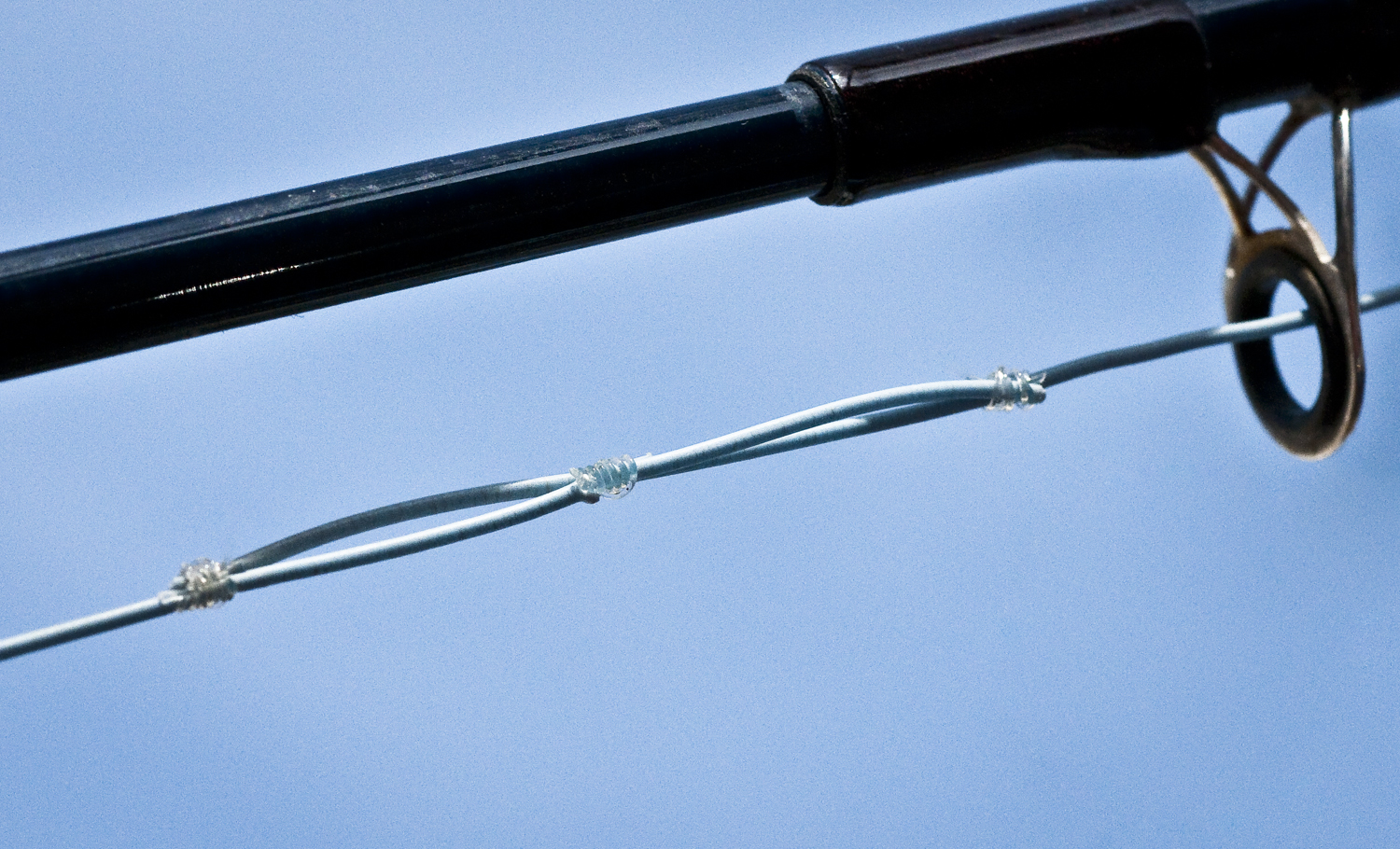
The other day I was out fishing with my buddy Rob Parkins when things took a sudden turn for the worse.
I was making a cast and the line at my feet caught on something sharp. I shot the line with so much power that my eight weight line was cut in two. We were a long way from the car and a spare setup. It looked like my fishing was going to be cut short.
I got the head back. About sixty or seventy feet had been cut off. It was enough line that I could make a short shot but shots were scarce that day and I hated the idea of being limited. I tried tying the line with a blood knot but it was impossible to get through the guides. Rob came up with a brilliant solution.
He suggested
Read More »Garners Carp Dancer
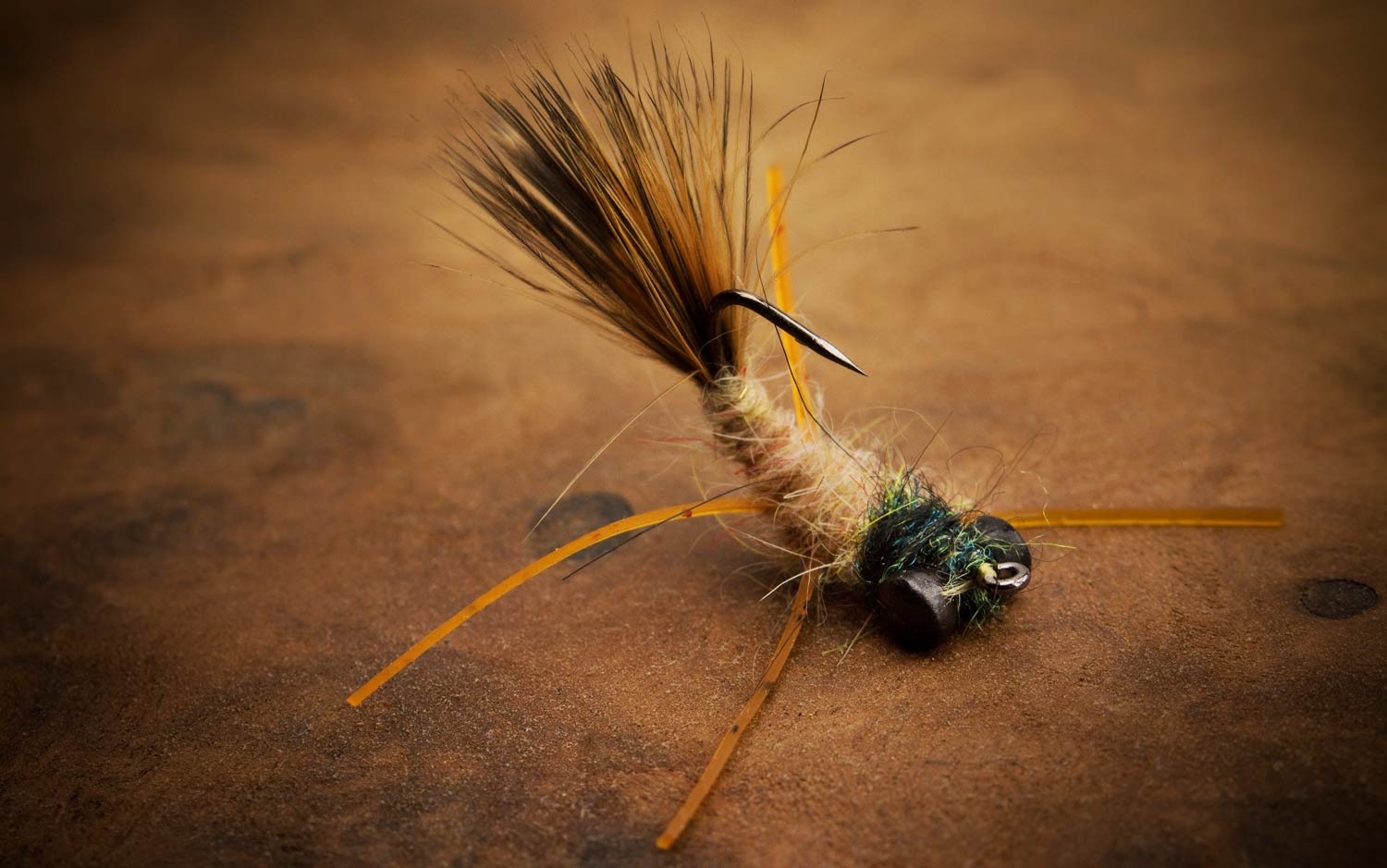
CARP ARE A NOTORIOUSLY PICKY FISH.
Anyone who’s thrown a fly at carp can tell you what a frustrating experience it can be. Fortunately our resident warm water expert Garner Reid has a solution. The Carp Dancer.
The carp dancer is tied on a curved shank hook with dumbbell eyes. This makes the fly present with its tail in the air. So I’m sure you can guess where the name carp dancer came from. When you twitch the fly it rides along the bottom with the marabou tail pulsing in the water. It drives the carp wild.
Watch the video and learn to tie Garners Carp Dancer.
Read More »Keep Your Leash Out of Trouble and Catch More Fish: Video
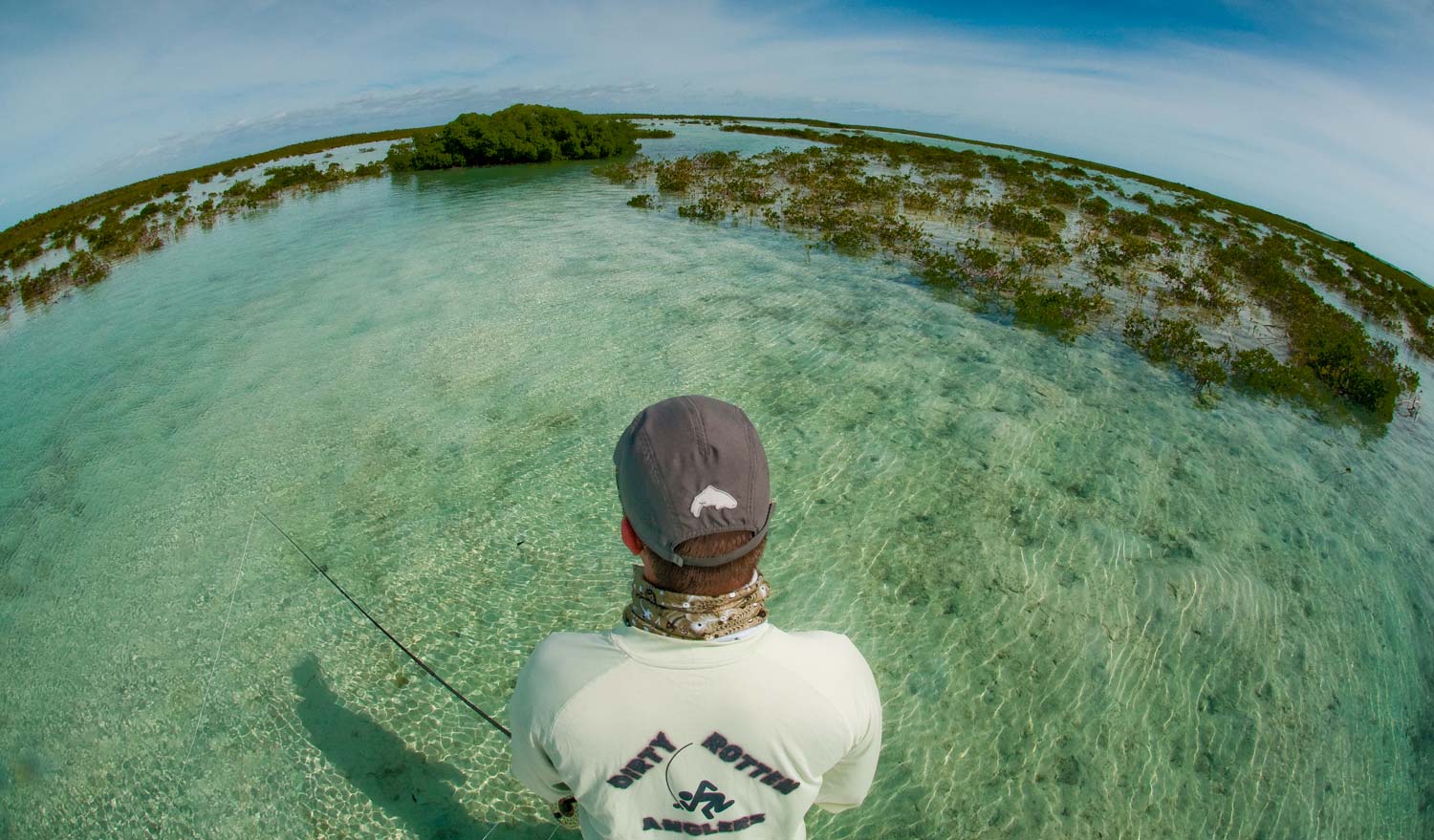
By Louis Cahill
Effective saltwater fly fishing is all about maximizing your opportunities to catch fish.
Saltwater fly fishing is usually not about numbers. You spend a lot of time hunting fish and waiting to get a shot. When you get that shot, it’s heartbreaking to miss it over something simple and totally avoidable, like having your fly line snag on a cleat or be trapped under the boat.
Being mindful of the condition of your leash is a full time job. Anyone who fishes with me can tell you that I compulsively check my leash. Often with a simple flick or the rod tip, checking for resistance while my eyes scan the flat. I try to always be aware of the direction of the current and the wind so I know instinctively what my leash id doing, both in the air and in the water. When it’s time to make a shot, I’m ready to make it count.
WATCH THE VIDEO AND I’LL SHOW YOU HOW TOO MANAGE YOUR LEASH.
Read More »Louis Goes Fishing
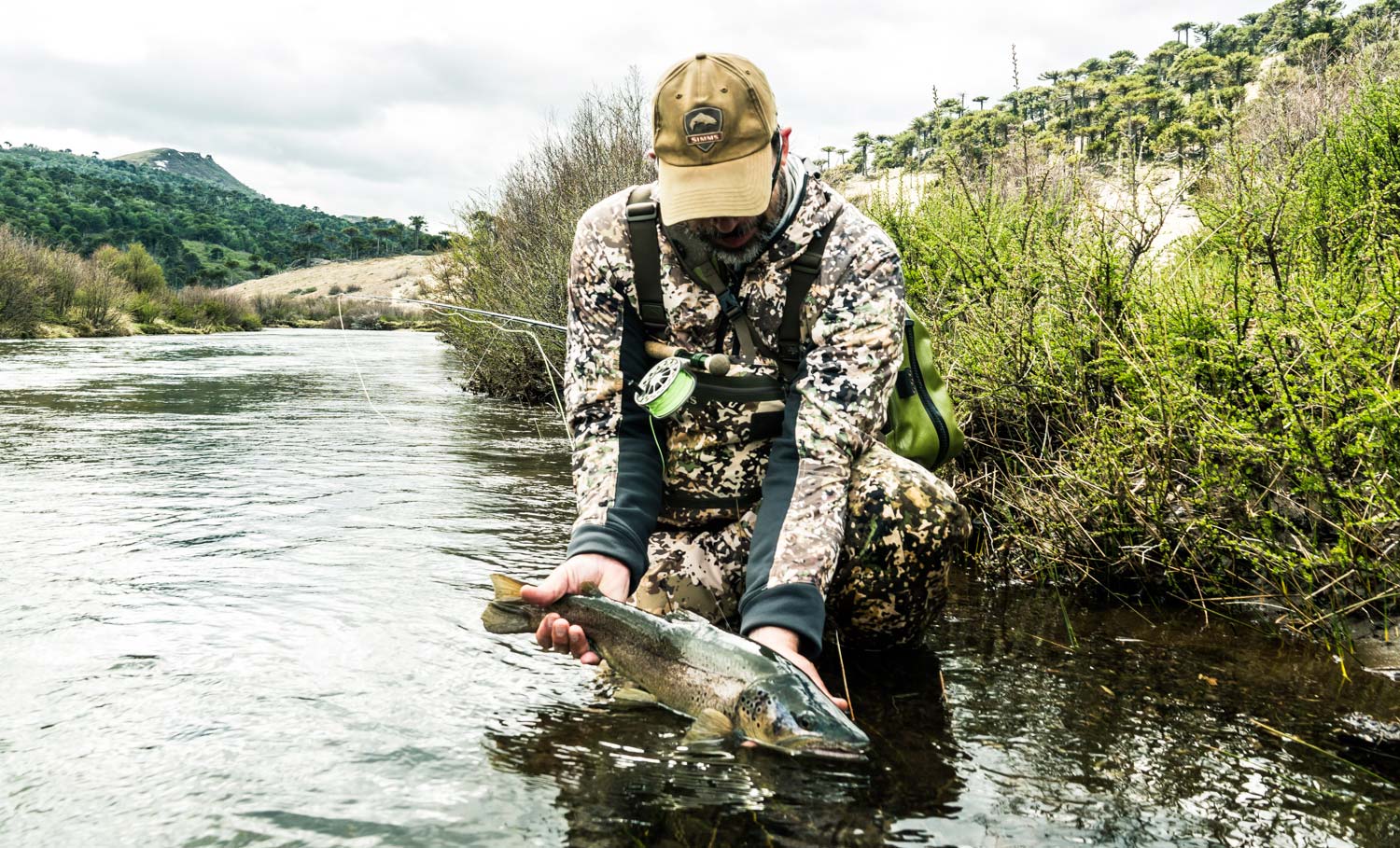
By Louis Cahill
IT’S BEEN A WHILE SINCE I POSTED AN UPDATE ON MY CONDITION.
Most of you know that the last year has been a rough one for me as I am in an ongoing struggle with PVR, which has impacted my vision and much more. Things change all the time but I’m hesitant to post updates. Folks would get tired of hearing about it and, frankly, I get tired of talking about it. I’m writing this because I actually do have some news and I honestly don’t have much else to write about, since this has been my life lately.
I expected to be in bed recovering from my seventh eye surgery this week, but I’m not. I saw the doctor a little over a week ago and he says I’m stable (that’s kind of a big deal) and there is no rush, so we rescheduled the surgery for October. That’s a huge relief! Being on my feet for a while is really going to help me recover from some of the unexpected side effects of my condition.
I knew going in that my vision was not going to be great. There was a good stretch there where they thought I might lose both eyes but, knock wood, that concern seems to have passed. My left eye seems to be in ok shape. There are no guarantees but with PVR but my doctor seems pretty confident about it. It’s been a while sine there was any talk of physically losing the right eye, which is awesome, but I am legally blind in that eye. Visually, for now at least, that’s very challenging. If the right eye were gone my vision would be better. The bad signal from the right eye makes a mess of everything. If, however, things were to go badly in the left eye I’d be damned glad to have it.
I didn’t know going in that this thing would wreck me in so many other ways. Recovering from multiple surgeries, I was in bed for a solid six months. Three months of that I couldn’t even roll over. That caused all sorts of other problems. Muscle atrophy, balance issues and nerve damage being the worst. Long story short, I had to learn to do simple things like walk, sit up and feed myself without a bib all over again.
I’m doing great now. I’m still very weak with some ironic pain but I am driving (which is huge) and doing pretty much whatever I want. I have fished twice in the last month. Ok, I know that doesn’t sound like a big deal but it is. I used to put in over 250 days a year but four hours on Sunday morning wiped me out. This week I’m fishing two days and for the first time I’ll be wading. Again, doesn’t sound like a dig deal, but just a few weeks ago the idea of standing in a stream seemed impossible. I’m incredibly excited. Hopefully next week I won’t be telling you about new cast on my leg!
For the casting geeks.
I was very afraid that I would be learning to cast a fly rod from scratch. Fortunately, some part of me remembers, at least, which end of the rod to hold. Thats not to say I’m
Read More »Using XL Trout Beads As Attractors In Your Tandem Rig
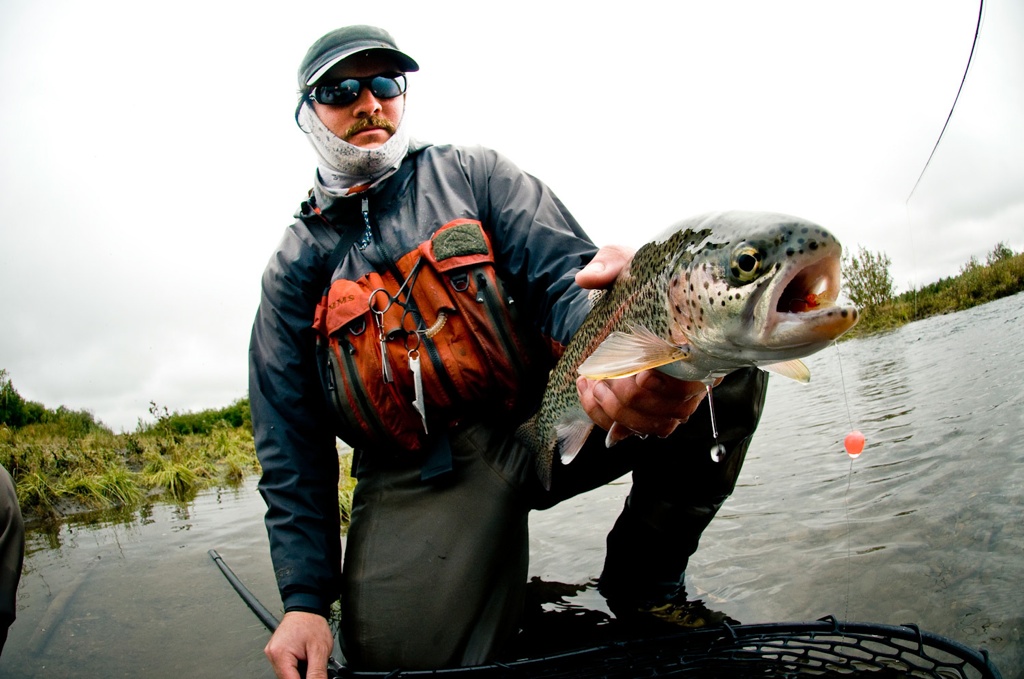
Back in 2006, I spent a season guiding in Alaska at Mission Creek Lodge.
It was a great experience and a hell of a lot of hard work, but I held my own and ended up representing well for Southeastern fishing guides. That doesn’t make me an expert on Alaska fishing by any means, particularly when compared to bad ass veteran alaskan guides like Andrew Grillos, TJ Zandoli, and Nathan Cornelius. That season in Alaska I was blessed with the opportunity to pick the brains and learn from some of the best bush guides in the area. One lesson I learned right off the bat was using an extra large attractor trout bead as my lead fly in my tandem bead rigs. Point being, matching the hatch and size of the eggs isn’t the only factor that plays into getting big trout to eat. The attraction factor you get by using a 10-12mm trout bead often sparks initial interest from big bows, persuading them to move in for a closer look. In most cases they’ll end up eating the smaller more appropriately sized bead, but it became very obvious to me how important a role, big attractor beads played in creating hookups.
Since then, I’ve experimented using big attractor beads on other trout waters in the United States. I often fish a 10mm trout bead in the top position with
Read More »Laying the Smack Down
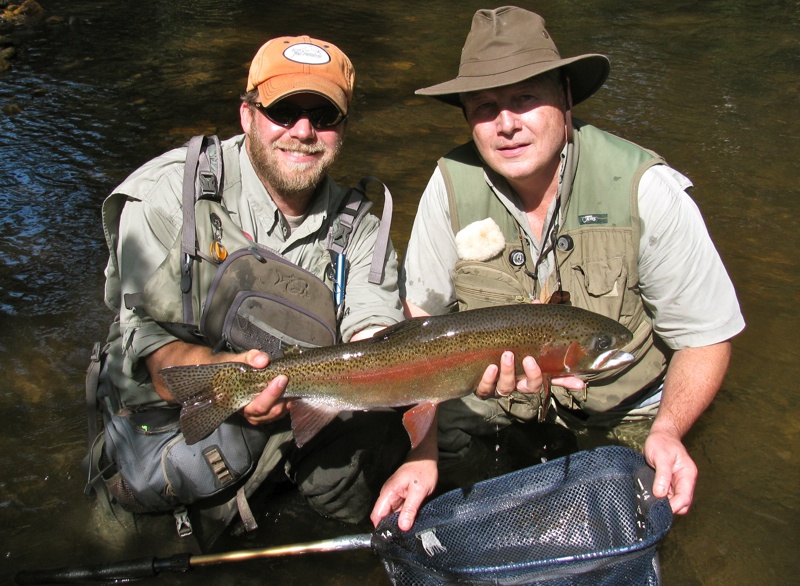
Sometimes you just have to lay the smack down on the water with your terrestrial fly patterns during the summer months to entice fish to eat.
This trophy rainbow trout turned on our flies repeated times only to veer off at the last second. I changed flies and rigs multiple times and then this trout completely shut down on us. It wouldn’t budge even when the fly drifted the perfect line over the fish.
I was about to give up when I told my client to scoot up a few feet closer and smack his dry fly down hard on the water right on the trout’s nose. He did so, and this big hen came up with no hesitation and inhaled his fly. It was a really cool fly fishing experience and my client was thrilled. Next time this summer you spot a trout and a regular drift doesn’t get the job done, try laying the smack down with your fly to imitate a bug flying into the water. Often it’s like ringing the dinner bell for trout.
Check out this video link below of some epic terrestrial fishing on my home water, shot by Bent Rod Media. The giant fish at the end required a “Smack Down” to entice it to eat.
Read More »Fly Fishing: Is Your Fly Swimming Right Side Up?
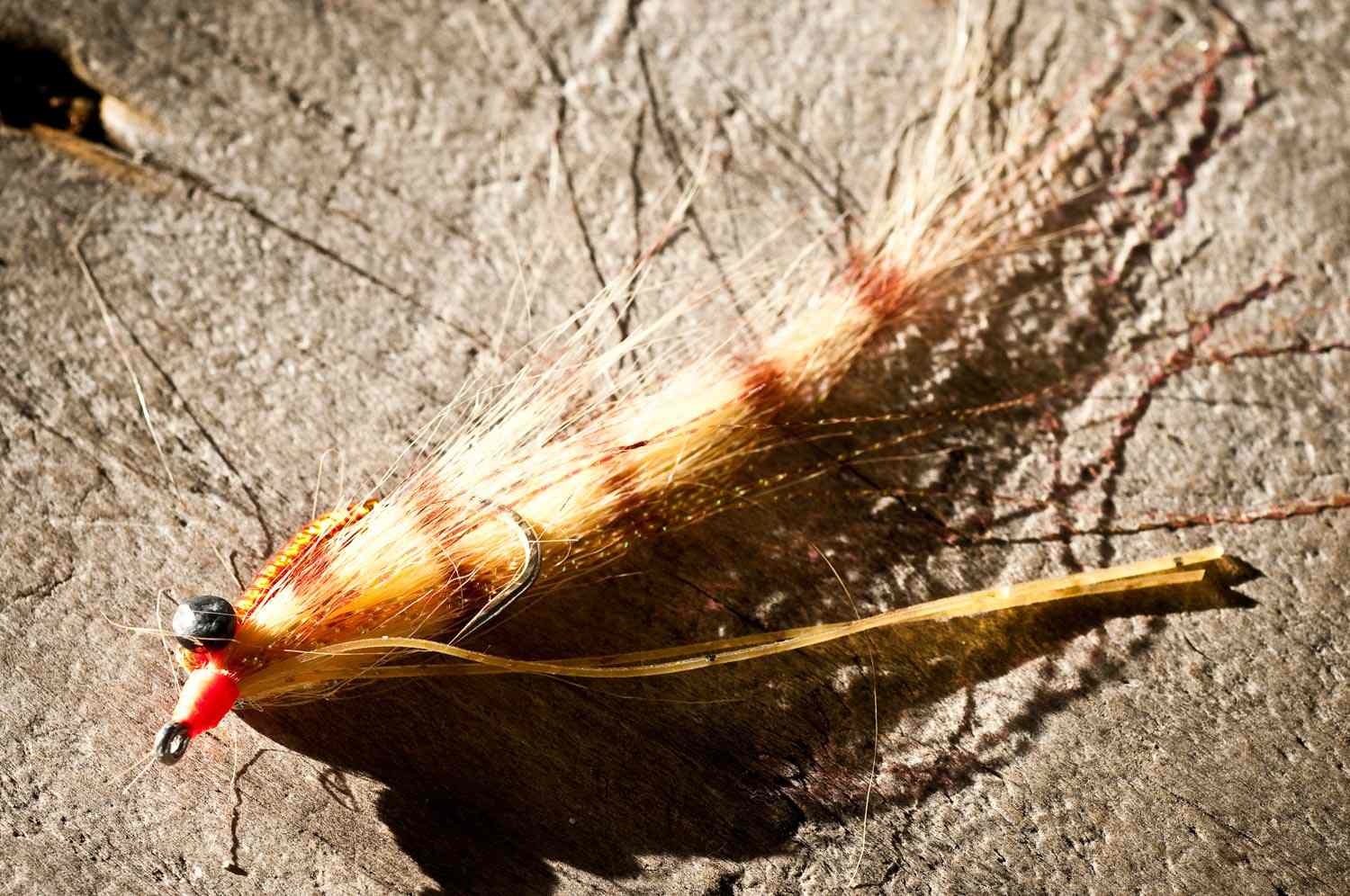
A FLY FISHING HERO OF MINE, CAPT. BRUCE CHARD, ONCE TOLD ME, “IT’S NOT HOW PRETTY YOUR FINISHED STREAMER IS AT THE VISE THAT MATTERS, BUT RATHER HOW IT’S GOING TO SWIM IN THE WATER?”
Until about the last ten years, I gave very little thought with regard to how I tied my fly tying materials on the hook for my streamer patterns. Nor did I think about how those materials being tied on the hook would in turn, influence how the streamer would keel in the water during the retrieve. This especially was true with fly patterns of mine that I intended 100% to ride hook point up in the water, for example, many of my saltwater fly patterns. It turns out that I was very ignorant, all of those years, thinking as long as I tied my dumbbell eyes on the correct side of the hook, that the weight of the dumbbell eyes would always flip my fly right side up in the water. For those of you who are veteran fly tiers, you most certainly understand this is not at all a guarantee, and you’d quickly point out that the buoyancy of the materials being used in a fly pattern, should always be carefully tied in on the hook in the correct position. The reason for this, is because the side of the fly that holds the most buoyant materials, will almost always end up on top in the water, regardless of whether or not weighted dumbbell eyes were used.
Read More »The Woman Behind The Feel
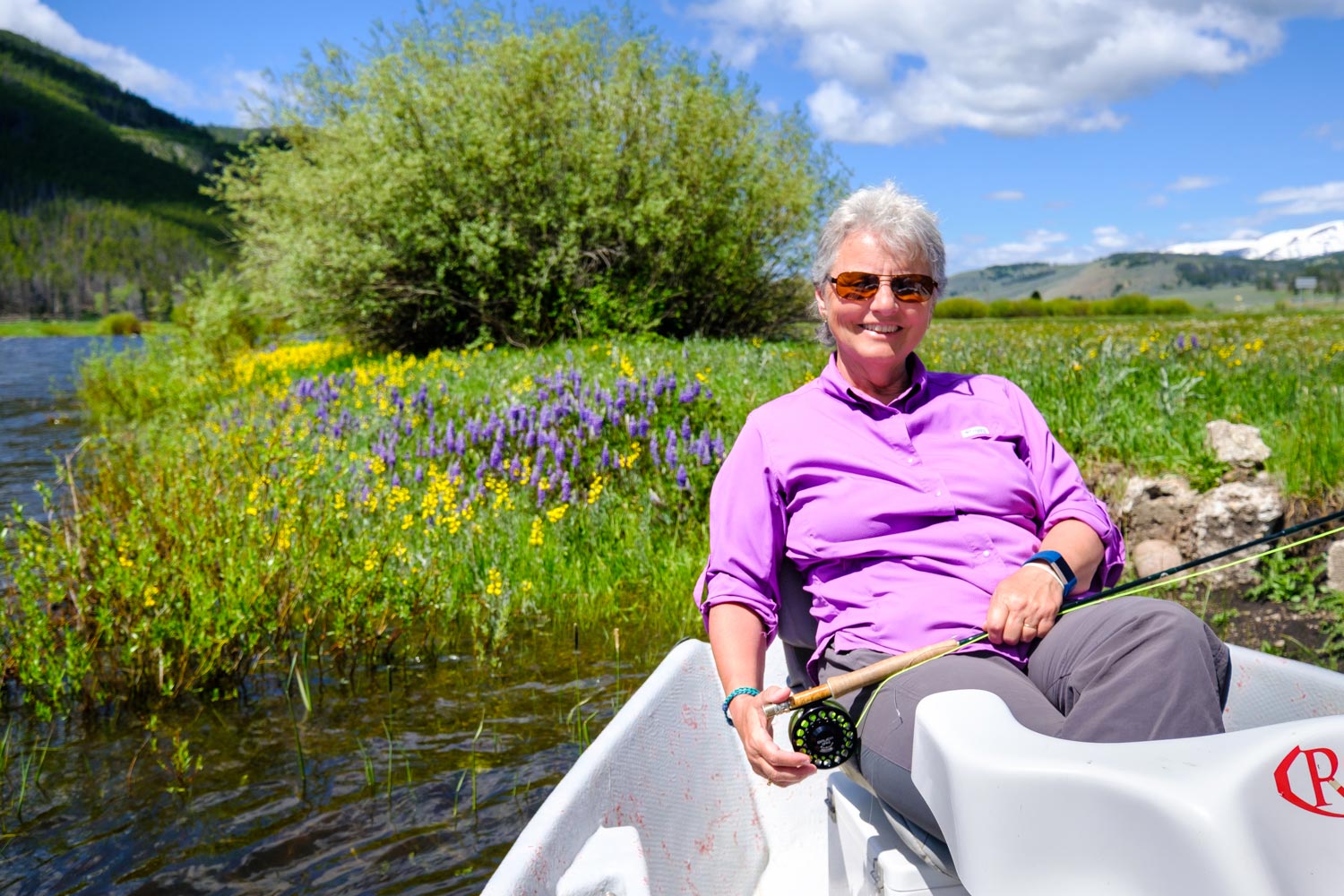
IF SHE WAS A MAN, SHE MIGHT HAVE BEEN A COWBOY.
The kind of quiet, earnest character Gary Cooper played in his old westerns. Raised on a Montana ranch with five brothers, she stands as if she were always ready to get to work. You wouldn’t be the least surprised to see her saddle a horse or mend a fence. She is serious, thoughtful, and when she speaks she gets straight to the point. And you’d better believe people listen.
Soft spoken, humble, completely unassuming and a bit on the quiet side, with short silver hair and perfect posture, Annette McClean doesn’t immediately stand out in a crowd. If you saw her at the grocery store you might think of her as someone’s mom, or grandmom, and you’d be right. She is those things, as well as being a great angler, a good friend and civicly involved neighbor. As it happens, Annette is also one of the most brilliant minds in fly rod design.
There’s no point in writing around it, Annette is unique in that she is the only woman to design fly rods for a major manufacturer. As far as I know, she is the only woman rod designer period. Not that it matters and it certainly doesn’t to Annette. There is a rich history of women in the fly fishing industry and though she is the first to hold this position, I’m sure she will not be the last.
“I never felt devalued at Winston because I was a woman,” she tells me.
Annette was working for a local conservation organization in the 1980s when she walked through the front door of the R.L.Winston Fly Rod Company. She wasn’t looking for a job, or even a fly rod. She was there to ask then owner, Tom Morgan, if he’d sell a piece of land.
“No,” Tom replied, “But I’ve got a job for you if you’re interested.”
The job was polishing reel seat hardware, and she took it. Not a glamorous position but she didn’t care. She enjoyed the work and before long Annette was doing a couple of other jobs around the plant, including working on bamboo rods with Glen Bracket.
Winston is the kind of place where employees take pride in their work and feel an ownership in it. Any employee can, at any time, take any part out of production if they find it to be anything other than perfect. They are expected to do it, and what’s more they are expected to take it back to the person responsible for the imperfection. It’s the kind of place where if you do your job well, you get more responsibility. The kind of place where your work ethic matters more than your resume and before long Annette McClean found herself in charge of operations, and then design.
Winston is one of the oldest and most storied brands in fly fishing, so it’s fitting that when you walk through the front door you find yourself in a museum. Glass cases hold old bamboo rods, many with world records attached to them. Old machinery and hand tools from the company’s early days line the walls. Black and white photos cover the walls. Photos of men who shaped fly fishing as we know it and most recently a photo of Annette McClean. None of them are
Read More »Be Stealthy Like Czech Nymphers
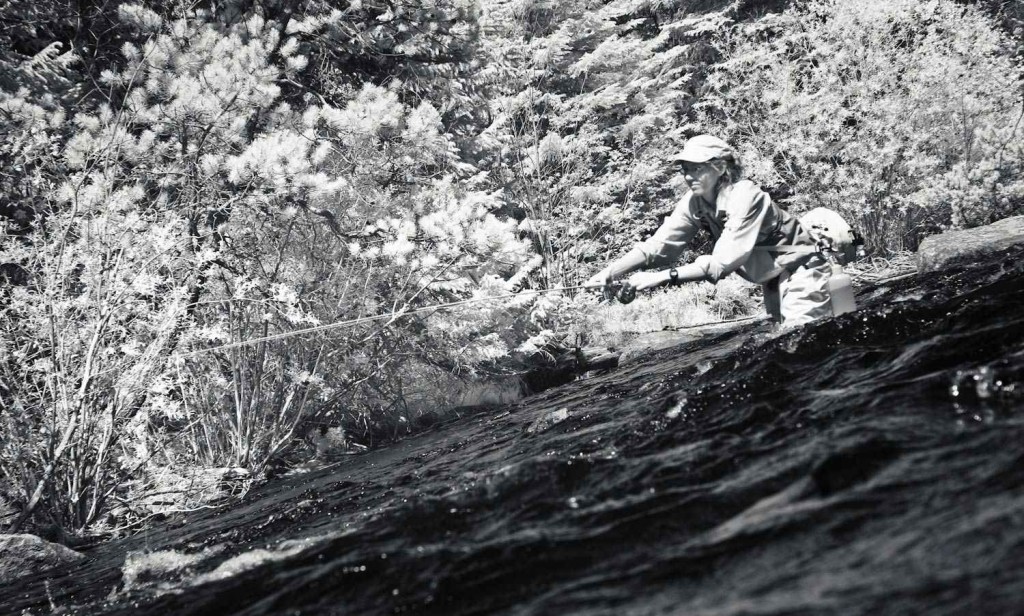
I’m not afraid to admit I’m not a big fan of Czech nymphing.
I’m not an aficionado of the popular three-fly nymph rig either. It’s not the right rig for fly anglers that lack discipline or are daydreaming fly casters. Furthermore, a freshly tied rig can become a birds nest instantly, simply by a landed fish, rolling in the net. That being said, I’m not saying Czech nymphing doesn’t work, it undoubtedly has it’s place in trout fishing, and can be highly effective at times, it’s just not my first choice.
Here’s what I’ll admit and also highly respect about the die hard Czech nymph fisherman out there. Most are very good at approaching fishing holes with complete stealth so they don’t spook fish. They take the time to think out their approach before casting, making sure they’re positioned perfectly so they can execute the best presentation and drift with their flies. Why do they do this you ask? Because success in czech nymphing demands it. Fly anglers fishing this rig are limited to short distance casts and drifts. This ensures they’ll stay in constant contact with their flies for strike detection and will also be able to maintain proper fly depth during their drifts.
You’ll never see a veteran czech nympher fishing out of his/her boundaries, and that’s why we should be paying more attention and adopting some of their techniques into our everyday fly fishing practices. It doesn’t matter one bit whether you’re a dry fly purist or prefer to nymph fish with an indicator, like I do. Far too often, I see anglers
Read More »